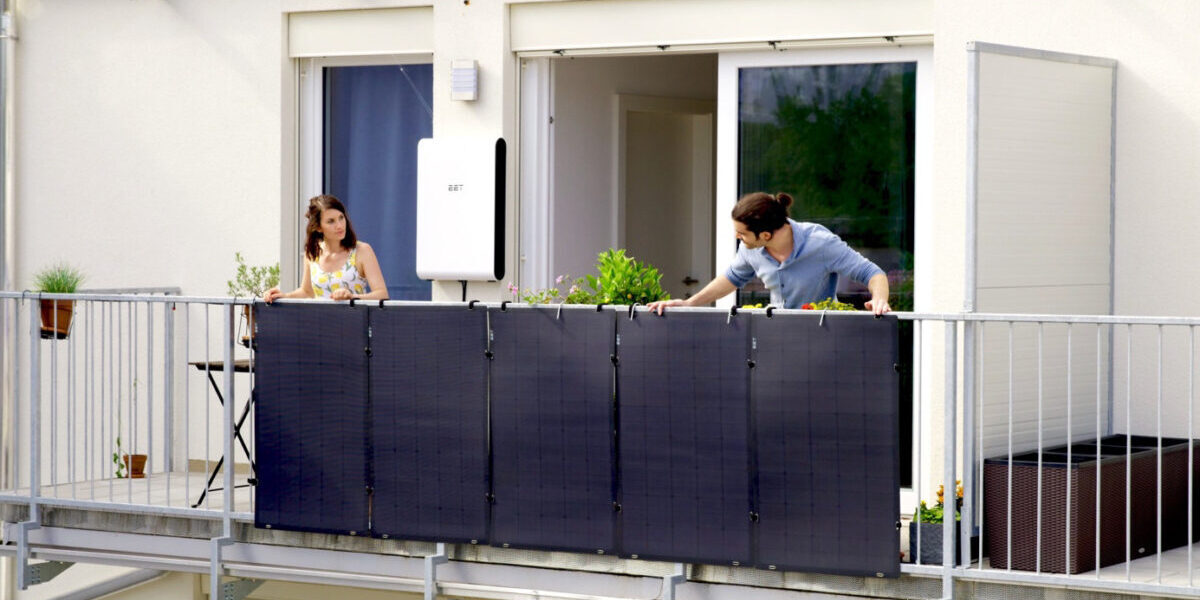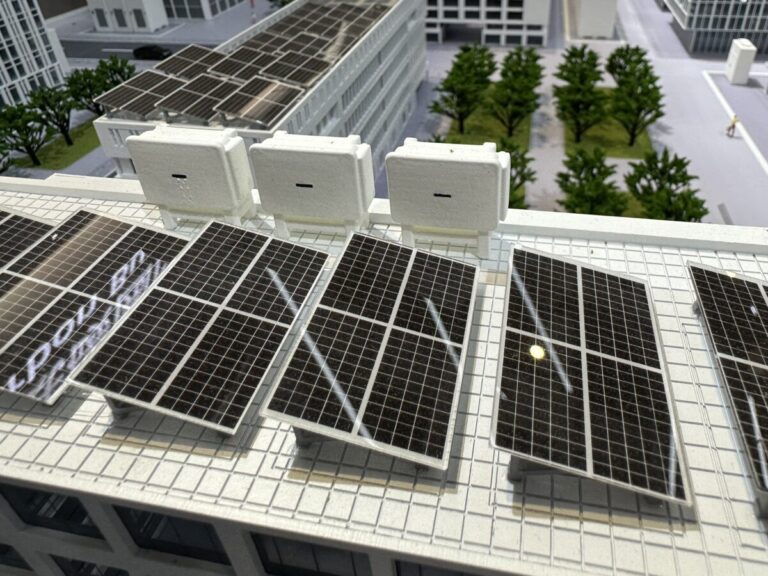Residential solar panels are often sold with long-term loans or leases, with homeowners signing contracts of 20 years or longer. But how long do panels last and how resilient are they?
The lifespan of panels depends on several factors, including climate, module type and racking system used. While there isn’t necessarily a specific “end date” for a panel, loss of production over time often causes equipment to be taken out of service.
When deciding whether to run your panel for 20 to 30 years in the future, or looking for an upgrade at that point, monitoring output levels is the best way to make an informed decision.
Relegation
The loss of production over time, called degradation, is typically about 0.5% per year, according to the National Renewable Energy Laboratory (NREL).
Manufacturers typically consider 25 to 30 years as a point at which sufficient degradation has occurred and it may be time to consider replacing a panel. The industry standard for manufacturing warranties is 25 years on a solar panel, according to NREL.
Given the annual degradation rate of 0.5%, a 20 year old panel can produce approximately 90% of its original capacity.
Panel quality may have some influence on the degradation rate. NREL reports that premium manufacturers such as Panasonic and LG have rates of around 0.3% per year, while some brands are downgraded with rates as high as 0.80%. After 25 years, these premium panels could still produce 93% of their original output, and the higher degradation example could produce 82.5%.
(Read: “Researchers assess degradation in PV systems older than 15 years“)
A significant portion of the degradation is attributed to a phenomenon called potential induced degradation (PID), a problem experienced by some, but not all, panels. PID occurs when the voltage potential and leakage current of the panel drive ion mobility within the module between the semiconductor material and other elements of the module, such as the glass, holder or frame. This reduces the output power of the module, in some cases significantly.
Some manufacturers build their panels with PID-resistant materials in their glass, encapsulation and diffusion barriers.
All panels also suffer from something called light-induced degradation (LID), where panels lose efficiency within the first few hours of exposure to the sun. LID varies from panel to panel based on the quality of the crystalline silicon wafers, but usually results in a one-time efficiency loss of 1-3%, according to PVEL testing laboratory, PV Evolution Labs.
Weathering
Exposure to weather conditions is the main cause of panel degradation. Heat is a key factor in both real-time panel performance and degradation over time. Ambient heat negatively affects the performance and efficiency of electrical components, according to NREL.
By consulting the manufacturer’s data sheet, a panel’s temperature coefficient can be found, which shows that the panel is capable of performing at higher temperatures.
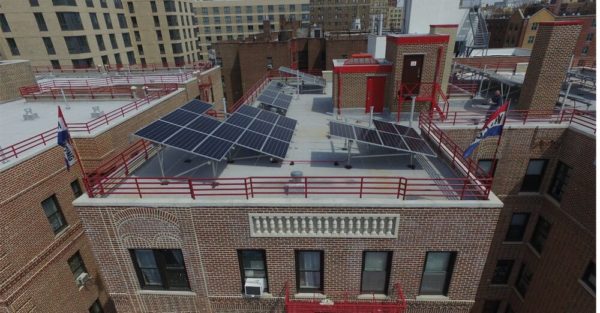
The coefficient explains how much real-time efficiency is lost for every degree Celsius that rises above the standard temperature of 25 degrees Celsius. For example, a temperature coefficient of -0.353% means that for every degree Celsius above 25, 0.353% of the total production capacity is lost.
Heat exchange causes panel degradation through a process called thermal cycling. When it is warm, materials expand, and when the temperature drops, they shrink. This movement slowly causes micro-cracks to form in the panel over time, reducing output.
In his annual Scorecard Study ModulePVEL analyzed 36 operational solar projects in India and found significant impacts from heat degradation. The average annual degradation of the projects was 1.47%, but arrays in colder, mountainous regions declined by almost half that rate, at 0.7%.

Proper installation can help solve heat-related problems. Panels should be installed a few inches above the roof to allow convective air to flow underneath and cool the equipment. Light-colored materials can be used in the panel construction to limit heat absorption. And components such as inverters and combiners, whose performance is particularly sensitive to heat, should be placed in the shade. suggested CED Greentech.
Wind is another weather condition that can cause damage to solar panels. Strong wind can cause the panels to bend, also called dynamic mechanical loading. This also causes micro cracks in the panels, reducing output. Some shelving solutions are optimized for high-wind areas, protecting the panels from strong upward forces and limiting micro-cracks. Normally the manufacturer’s data sheet will provide information on the maximum wind the panel can withstand.
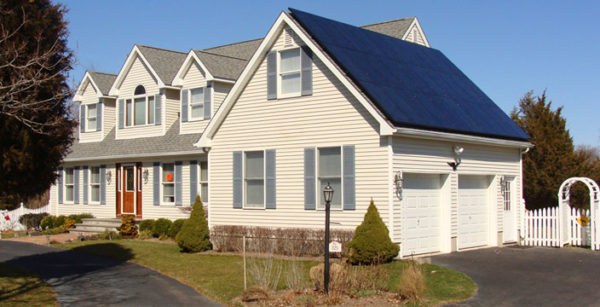
The same goes for snow, which can cover panels during heavier storms, limiting production. Snow can also cause a dynamic mechanical load, which affects the panels. Normally the snow slides off the panels because they are slippery and get warm, but in some cases a homeowner may decide to remove the snow from the panels. This must be done carefully, as scratches on the glass surface of the panel would have a negative effect on the output.
(Read: “Tips to keep your rooftop solar system running in the long term“)
Degradation is a normal, unavoidable part of a panel’s lifespan. Correct installation, careful snow removal and careful panel cleaning can help with yield, but ultimately a solar panel is a technology with no moving parts, requiring very little maintenance.
Standards
To ensure that a particular panel has a long service life and functions as planned, it must undergo standard testing for certification. Panels are subject to the International Electrotechnical Commission (IEC) tests, which apply to both mono- and polycrystalline panels.
said EnergySage panels that comply with the IEC 61215 standard are tested for electrical characteristics such as wet leakage currents and insulation resistance. They undergo a mechanical load test for both wind and snow, and climate tests that check for hotspot weaknesses, UV exposure, moisture freezing, moist heat, hail impacts and other outdoor air exposure.
IEC 61215 also determines the performance data of a panel under standard test conditions, including temperature coefficient, open-circuit voltage and maximum output power.
Also commonly seen on a panel specification sheet is the seal of Underwriters Laboratories (UL), which also provides standards and testing. UL performs climax and aging tests, as well as the full range of safety tests.
Failures
Faults in solar panels occur at a low rate. NREL conducted a study of the more than 50,000 systems installed in the United States and 4,500 worldwide between the years 2000 and 2015. The study found an average failure rate of 5 panels out of 10,000 per year.
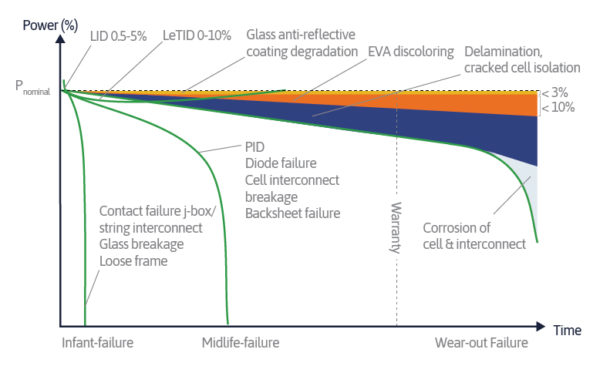
Panel failure has improved significantly over time, as systems installed between 1980 and 2000 were found to have a failure rate twice that of post-2000.
(Read: “Top brands of solar panels in terms of performance, reliability and quality“)
System failures are rarely attributed to panel failures. In fact, a study by kWh Analytics found that 80% of all solar installation downtime is the result of failing inverters, the device that converts the panel’s DC power into usable AC power. pv magazine will analyze the inverter performance in the next installment of this series.
This content is copyrighted and may not be reused. If you would like to collaborate with us and reuse some of our content, please contact: editors@pv-magazine.com.
Popular content
